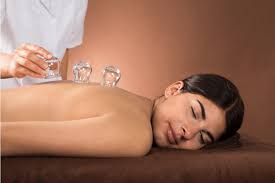The Advantages and Methodology of Cupping Therapy
Origins and Techniques:
Originating thousands of years ago, cupping therapy initially involved the use of animal horns. Today, practitioners typically use glass, silicone, or plastic cups. The cups create suction when placed on the skin, either through heat (fire cupping) or suction pumps (modern cupping). Fire cupping involves briefly igniting a cotton ball soaked in alcohol, which is then placed inside the cup to create suction before being applied to the skin. Modern cupping uses suction pumps to create the vacuum effect.
Variations in cupping techniques include stationary cupping, where cups remain in place for several minutes, and moving cupping, where the cups glide across the skin using oils for lubrication. Another method, wet cupping, involves creating small incisions on the skin after cup removal to draw out a small amount of blood.
Potential Benefits:
Advocates of cupping therapy claim various benefits, although scientific evidence supporting these claims is limited. Some purported benefits include:
Pain Relief: Cupping might assist in easing muscle and joint discomfort by enhancing blood circulation to the impacted regions, potentially offering relief.
Improved Circulation: The suction from cupping can stimulate blood flow, potentially promoting better circulation.
Stress Reduction: Many individuals report feelings of relaxation and reduced stress levels after cupping sessions.
Detoxification: Proponents believe cupping helps remove toxins from the body, although scientific evidence supporting this is inconclusive.
Enhanced Healing: Some suggest that cupping accelerates the body's natural healing processes.
Considerations and Precautions:
While cupping therapy is generally considered safe, there are some considerations and potential side effects to be aware of. These include:
Skin Irritation: Cupping may cause temporary skin discolouration, bruising, or mild discomfort at the cup placement sites.
Risk of Burns: Fire cupping requires caution to prevent burns, and inexperienced practitioners might cause accidental burns.
Not Suitable for Everyone: People with certain skin conditions, such as eczema or sunburn, or those who bleed easily should avoid cupping therapy.
Lack of Scientific Evidence: Many claims regarding the therapeutic benefits of cupping are anecdotal, and rigorous scientific studies are needed for conclusive evidence.
Cupping Therapy in The Heights, TX an ancient practice with roots in various cultures, has gained popularity in modern times. While anecdotal evidence suggests several potential benefits, scientific research supporting these claims is limited. Individuals considering cupping therapy should consult qualified practitioners and be aware of the possible side effects and contraindications. As the interest in alternative healing methods grows, continued research into cupping treatment may provide more insights into its efficacy and potential applications in holistic healthcare.
Remember, before trying any new therapy or treatment; it's essential to consult a healthcare professional or qualified practitioner to ensure it's safe and suitable for your specific health conditions or concerns.


.png)


Comments
Post a Comment